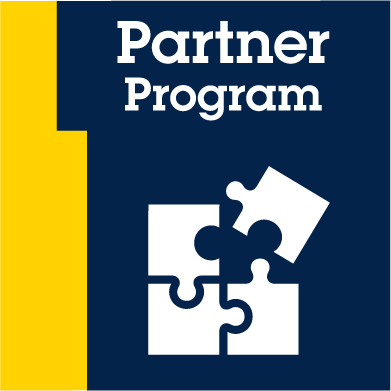In the CSA Matter ecosystem, device manufacturers are mandated to provision a distinctive Device Attestation Credential (DAC), encompassing both the cryptographic key and certificate into each device. These certificates are issued through their respective Production Attestation Intermediate (PAI), intricately linked to the Root Product Attestation Authority (PAA). The cloud hosting of Device Manufacturers' specific PAIs is managed by CommScope.
For security considerations in the Matter ecosystem, DAC key pair should be generated and securely maintained within the device, aligning with Matter requirements. Consequently, the Certificate Signing Request (CSR) should be generated from the device and transmitted to the cloud, where the PAI is hosted, to obtain its corresponding certificate. Following the certificate's return to the device, it should undergo validation, ensuring alignment with the original key pair to prevent any mismatches. The provisioning of DAC requires a substantial adjustment in device manufacturing processes, involving the integration of new steps and functions. This demands expertise in implementing Elliptic-curve Cryptography (ECC)-based key pair and Certificate Signing Request (CSR) generation, as well as X.509 certificate validation with the key pair.
This session will elucidate how device manufacturers can collaborate with CommScope, leveraging their comprehensive suite of factory automation and security clients/applications. The objective is to facilitate a secure and streamlined Matter DAC provisioning process, minimizing production errors, and optimizing cost-effectiveness.

Lorem ipsum dolor sit amet, consectetur adipisicing elit.
Time
Content
8:00 - 9:00
Registration and system check for pre-installed tools
Morning session: Stepper motors with STSPIN820 / POWERSTEP01
9:00 - 10:00
Stepper motor fundaments
Theory: What makes a stepper turn?
Voltage and current mode drive
Limitations,speed/torque,ect
9:00 - 10:00
Stepper motor fundaments
Theory: What makes a stepper turn?
Voltage and current mode drive
Limitations,speed/torque,ect
11:30 - 12:30
Lunch
11:30 - 12:30
Lunch
11:30 - 12:30
Lunch
11:30 - 12:30
Lunch
10:00 - 11:30
STSPIN820 or POWERSTEP01
Using the GUI to evaluate motor operation
Configuring motor control parameters with the GUI
Implementing a drive based on the firmware pack
10:00 - 11:30
STSPIN820 or POWERSTEP01
Using the GUI to evaluate motor operation
Configuring motor control parameters with the GUI
Implementing a drive based on the firmware pack
9:00 - 10:00
Stepper motor fundaments
Theory: What makes a stepper turn?
Voltage and current mode drive
Limitations,speed/torque,ect
11:30 - 12:30
Lunch
Afternoon session: BLDC motors with STSPIN32F0
12:30 - 1:30
BLDC theory and fundamentals
# pole pairs
What makes FOC work (donkey and carrot example)
Sensoriess vs. Sensored feedback control
1:30 - 3:00
Implementing a 6-step drive
3:00 - 4:30
Implementing a FOC drive
3:00 - 4:30
Implementing a FOC drive
3:00 - 4:30
Implementing a FOC drive
3:00 - 4:30
Implementing a FOC drive
3:00 - 4:30
Implementing a FOC drive
3:00 - 4:30
Implementing a FOC drive
3:00 - 4:30
Implementing a FOC drive
3:00 - 4:30
Implementing a FOC drive
Afternoon session: BLDC motors with STSPIN32F0
12:30 - 1:30
BLDC theory and fundamentals
# pole pairs
What makes FOC work (donkey and carrot example)
Sensoriess vs. Sensored feedback control
3:00 - 4:30
Implementing a FOC drive
3:00 - 4:30
Implementing a FOC drive
3:00 - 4:30
Implementing a FOC drive
3:00 - 4:30
Implementing a FOC drive
3:00 - 4:30
Implementing a FOC drive
3:00 - 4:30
Implementing a FOC drive
3:00 - 4:30
Implementing a FOC drive
3:00 - 4:30
Implementing a FOC drive
3:00 - 4:30
Implementing a FOC drive
Afternoon session: BLDC motors with STSPIN32F0
12:30 - 1:30
BLDC theory and fundamentals
# pole pairs
What makes FOC work (donkey and carrot example)
Sensoriess vs. Sensored feedback control
3:00 - 4:30
Implementing a FOC drive
3:00 - 4:30
Implementing a FOC drive
3:00 - 4:30
Implementing a FOC drive
3:00 - 4:30
Implementing a FOC drive
3:00 - 4:30
Implementing a FOC drive
3:00 - 4:30
Implementing a FOC drive
3:00 - 4:30
Implementing a FOC drive
3:00 - 4:30
Implementing a FOC drive
3:00 - 4:30
Implementing a FOC drive
Afternoon session: BLDC motors with STSPIN32F0
12:30 - 1:30
BLDC theory and fundamentals
# pole pairs
What makes FOC work (donkey and carrot example)
Sensoriess vs. Sensored feedback control
3:00 - 4:30
Implementing a FOC drive
3:00 - 4:30
Implementing a FOC drive
3:00 - 4:30
Implementing a FOC drive
3:00 - 4:30
Implementing a FOC drive
3:00 - 4:30
Implementing a FOC drive
3:00 - 4:30
Implementing a FOC drive
3:00 - 4:30
Implementing a FOC drive
3:00 - 4:30
Implementing a FOC drive
3:00 - 4:30
Implementing a FOC drive
Afternoon session: BLDC motors with STSPIN32F0
12:30 - 1:30
BLDC theory and fundamentals
# pole pairs
What makes FOC work (donkey and carrot example)
Sensoriess vs. Sensored feedback control
3:00 - 4:30
Implementing a FOC drive
3:00 - 4:30
Implementing a FOC drive
3:00 - 4:30
Implementing a FOC drive
3:00 - 4:30
Implementing a FOC drive
3:00 - 4:30
Implementing a FOC drive
3:00 - 4:30
Implementing a FOC drive
3:00 - 4:30
Implementing a FOC drive
3:00 - 4:30
Implementing a FOC drive
3:00 - 4:30
Implementing a FOC drive
Afternoon session: BLDC motors with STSPIN32F0
12:30 - 1:30
BLDC theory and fundamentals
# pole pairs
What makes FOC work (donkey and carrot example)
Sensoriess vs. Sensored feedback control
3:00 - 4:30
Implementing a FOC drive
3:00 - 4:30
Implementing a FOC drive
3:00 - 4:30
Implementing a FOC drive
3:00 - 4:30
Implementing a FOC drive
3:00 - 4:30
Implementing a FOC drive
3:00 - 4:30
Implementing a FOC drive
3:00 - 4:30
Implementing a FOC drive
3:00 - 4:30
Implementing a FOC drive
3:00 - 4:30
Implementing a FOC drive
Afternoon session: BLDC motors with STSPIN32F0
12:30 - 1:30
BLDC theory and fundamentals
# pole pairs
What makes FOC work (donkey and carrot example)
Sensoriess vs. Sensored feedback control
3:00 - 4:30
Implementing a FOC drive
3:00 - 4:30
Implementing a FOC drive
3:00 - 4:30
Implementing a FOC drive
3:00 - 4:30
Implementing a FOC drive
3:00 - 4:30
Implementing a FOC drive
3:00 - 4:30
Implementing a FOC drive
3:00 - 4:30
Implementing a FOC drive
3:00 - 4:30
Implementing a FOC drive
3:00 - 4:30
Implementing a FOC drive
Afternoon session: BLDC motors with STSPIN32F0
12:30 - 1:30
BLDC theory and fundamentals
# pole pairs
What makes FOC work (donkey and carrot example)
Sensoriess vs. Sensored feedback control
3:00 - 4:30
Implementing a FOC drive
3:00 - 4:30
Implementing a FOC drive
3:00 - 4:30
Implementing a FOC drive
3:00 - 4:30
Implementing a FOC drive
3:00 - 4:30
Implementing a FOC drive
3:00 - 4:30
Implementing a FOC drive
3:00 - 4:30
Implementing a FOC drive
3:00 - 4:30
Implementing a FOC drive
3:00 - 4:30
Implementing a FOC drive
Afternoon session: BLDC motors with STSPIN32F0
12:30 - 1:30
BLDC theory and fundamentals
# pole pairs
What makes FOC work (donkey and carrot example)
Sensoriess vs. Sensored feedback control
3:00 - 4:30
Implementing a FOC drive
3:00 - 4:30
Implementing a FOC drive
3:00 - 4:30
Implementing a FOC drive
3:00 - 4:30
Implementing a FOC drive
3:00 - 4:30
Implementing a FOC drive
3:00 - 4:30
Implementing a FOC drive
3:00 - 4:30
Implementing a FOC drive
3:00 - 4:30
Implementing a FOC drive
3:00 - 4:30
Implementing a FOC drive

Dr. Xin Qiu, with over 25 years of experience in Public Key Infrastructure (PKI) and device security, serves as Sr. Director at CommScope. Leading a diverse team in R&D, operations, and product marketing, she collaborates with global device manufacturers and network operators. With a portfolio of 80+ patents, Dr. Qiu is recognized as the mastermind behind the success of CommScope’s PKI and security service offerings.

Jason Pasion, a Director of Software Engineering at CommScope, brings over 25 years of experience in designing and developing PKI services and security solutions. Managing a team responsible for secure communication protocols & global PKI deployments, he possesses expertise in common cryptography standards & hardware security modules. With a focus on IoT solutions, he is currently developing Matter PKI integration with a leading IoT chip manufacturer and holds 15 US patents.

Anibal Castillo is Product Marketing Manager, within the STM32 wireless business line. He is head of product development, and is experienced in defining and implementing product management and R&D strategies, as well as building and maintaining strategic partnerships. His professional happiness comes from delivering efficient and satisfying solutions to customers.
All rights reserved © 2025 STMicroelectronics | Terms of use | Sales Terms & Conditions | Trademarks | Privacy Portal
